William Brumfield, bth.com, Feb 22, 2019; please refer to original article for photographs in their full scale
The ancient Rus town inspired Nicholas Roerich, whose paintings colorfully recreated visions of Viking boats here.
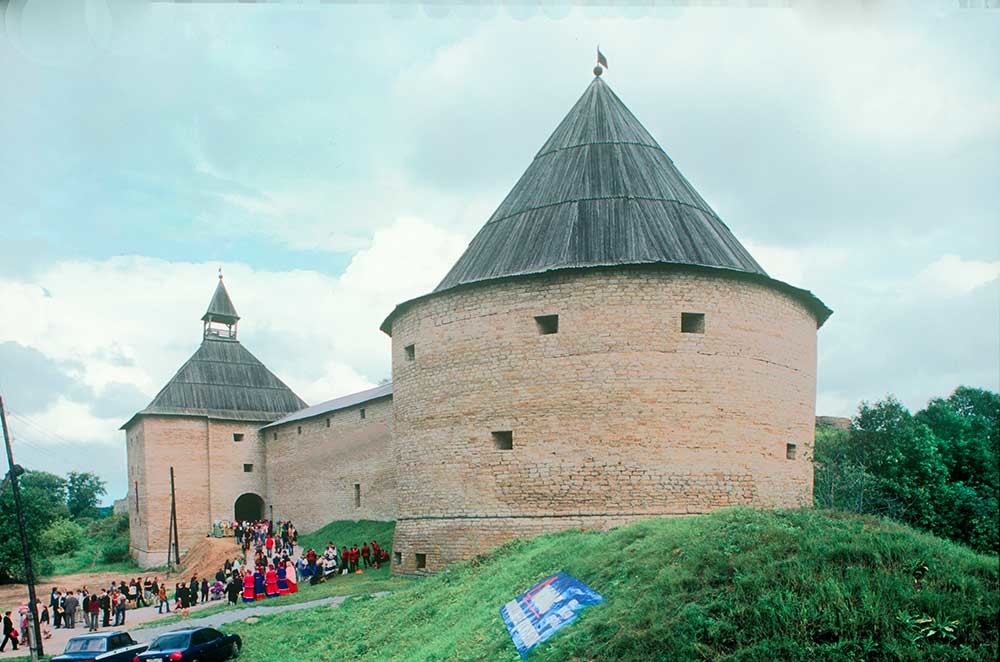
Staraya Ladoga Fortress. West wall with Vorotnaya Tower (left) & Clement Tower. Restored in 1976. August 16, 2003.
At the beginning of the 20thcentury the Russian chemist and photographer Sergei Prokudin-Gorsky developed a remarkably versatile process for color photography. Inspired to use this method for recording the diversity of the Russian Empire, he undertook numerous journeys over a vast territory from 1903 to 1916.
In June and July of1909 Prokudin-Gorsky received a commission from the Ministry of Transportation to photograph along the Marinsky Waterway, a complex system initiated by Peter the Great to connect the Volga River basin with his new city of St. Petersburg, founded in 1703 and designated the capital of Russia in 1712.Utilizing Lakes Ladoga, Onega and White Lake, the system led to the Sheksna River, which in turn emptied into the Volga northwest of Moscow.
At the beginning of the 20th
In June and July of
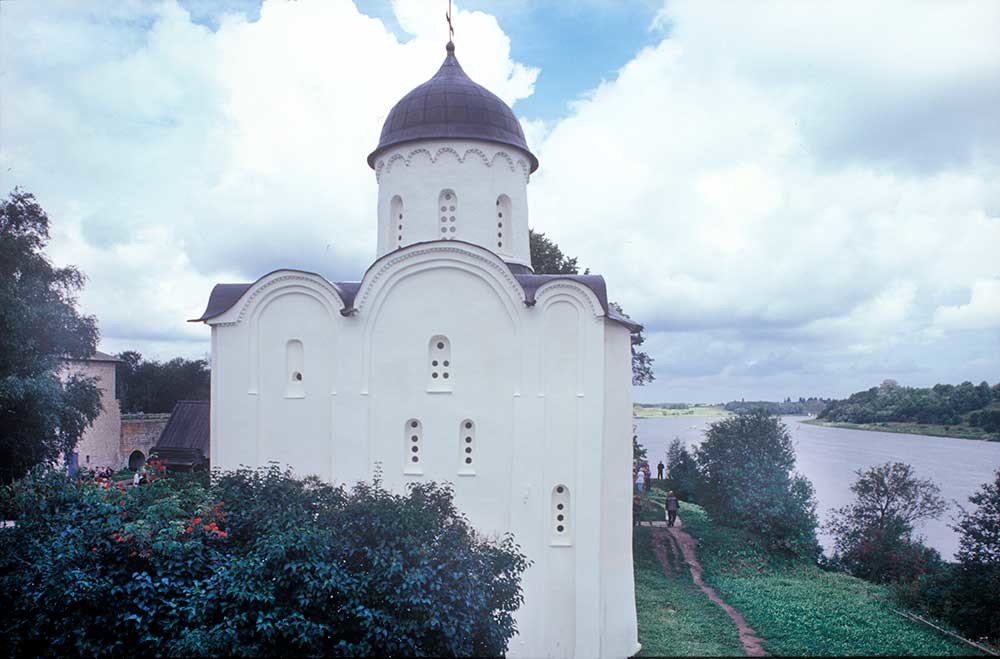
Staraya Ladoga Fortress. Church of St. George, south facade. View north with Volkhov River & Vorotnaya Tower (far left). August 16, 2003.
William Brumfield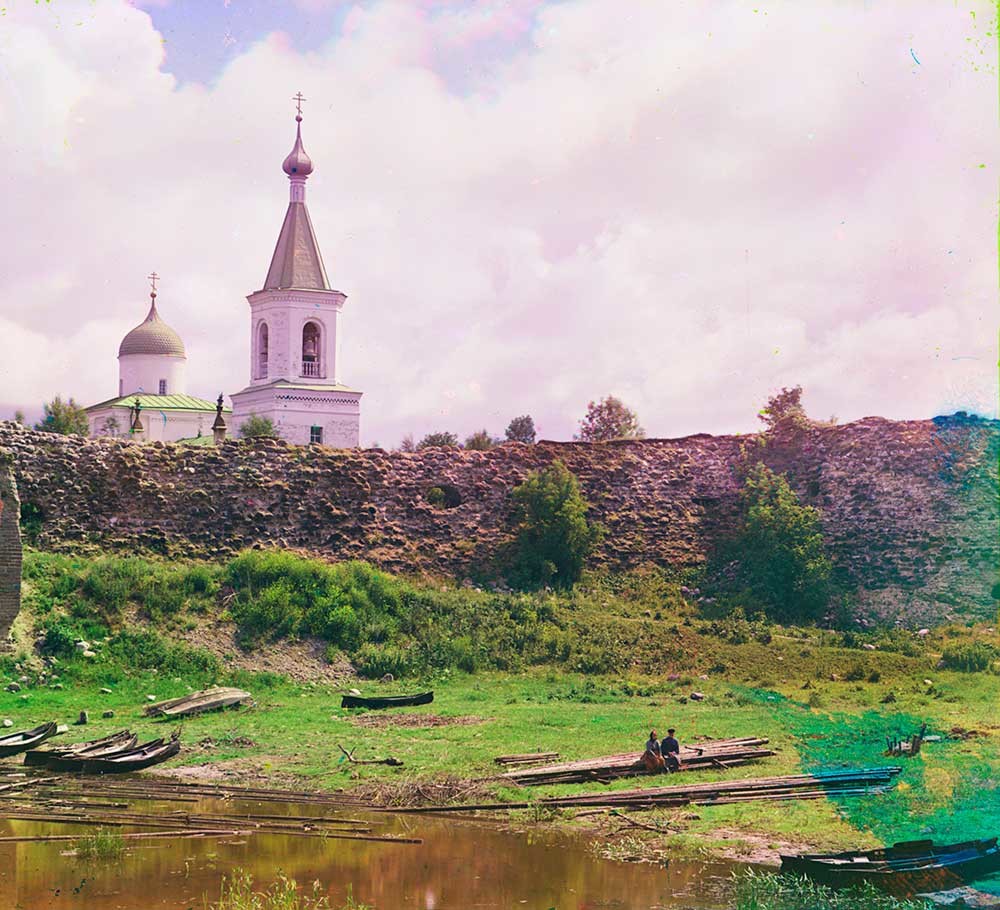
Staraya Ladoga Fortress. West wall with Church of St. George & bell tower (demolished). Foreground: Ladozhka (Elena) River. Summer 1909.
Sergei Prokudin-Gorsky
The early Ladoga fortress had earthen ramparts and has been dated to the 9th century. Medieval chronicles link it to the semi-legendary Varangian leader Riurik, who with his two brothers Sineus and Truvor assumed control over the vast territory of ancient Rus in the 860s. At this time the Ladoga area was settled by a mixture of Slavs and Finnic peoples, but there was also apparently a Norse presence.
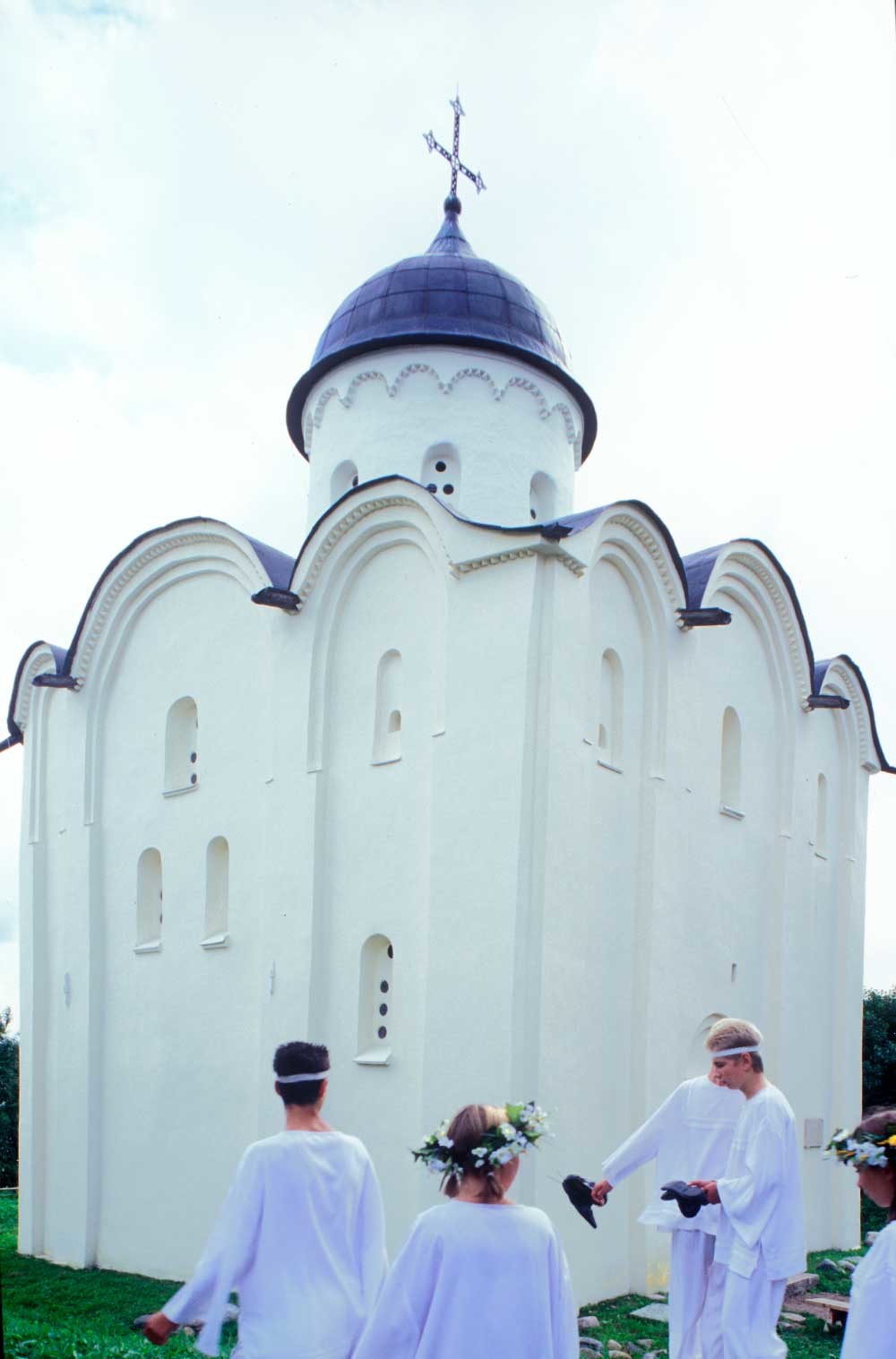
Church of St. George, northwest view taken during annual town festival. August 16, 2003.
William Brumfield
In the mid 860s the center of Riurik’s power moved to Veliky Novgorod, and after his death around 879, his kinsman, Prince Oleg, shifted the power center southward to Kiev on the Dnieper River. Nonetheless, chronicle accounts maintain Riurik’s early presence in Ladoga in 862. This seems logical in view of the important role of Lake Ladoga and the Volkhov River in the trading route “from the Varangians to the Greeks”.
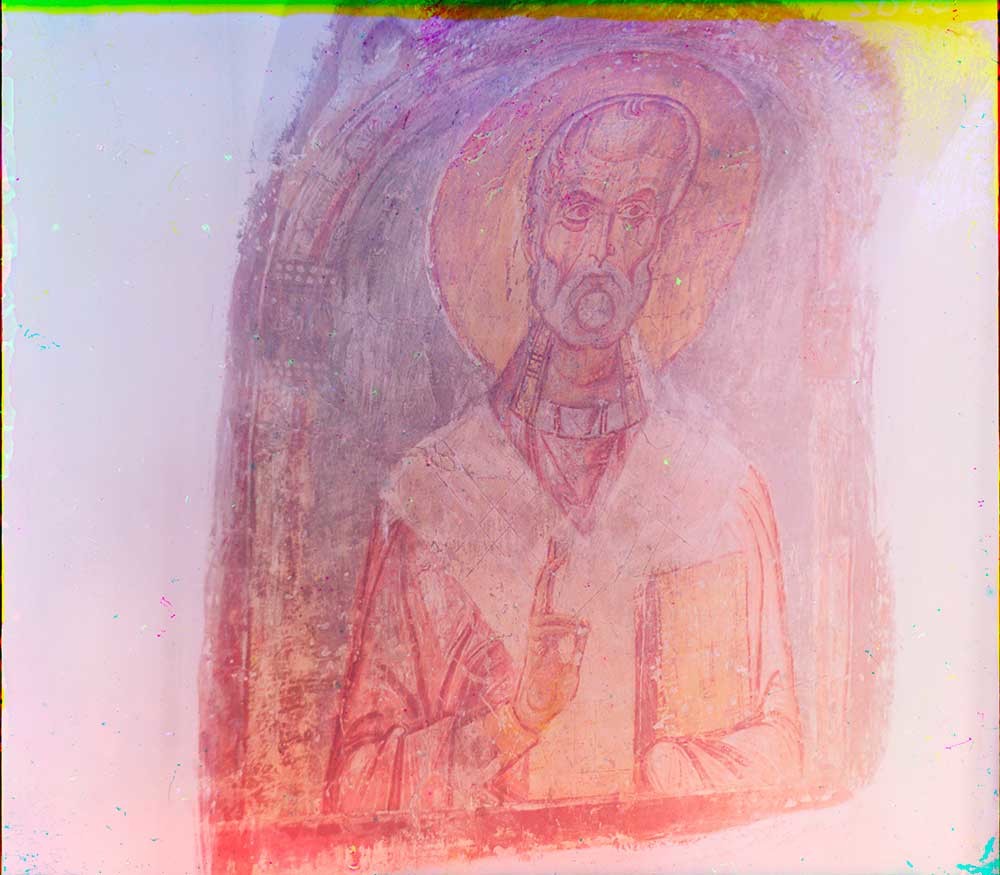
Church of St. George, interior. Late 12th-century fresco of St. Nicholas. Summer 1909.
Sergei Prokudin-Gorsky
Despite the power shift to the south, the continued importance of Ladoga is reflected in the imposing stone walls that replaced the earthen fortress in the early 12th century. Begun by Novgorod Prince Mstislav the Great, this remarkable fortification guarded the area south of Lake Ladoga from Swedish incurions .
The oldest shrine photographed by Prokudin-Gorsky in Ladoga was the Church of St. George, seen in his photograph over a section of the ruined fortress walls. There is no evidence that he photographed the church more closely. The constricted space inside the fortress and the ruined state of the fortress walls apparently excluded the distance that his limited camera lens would have needed to encompass the entire structure. I had the advantage of a reconstructed fortress wall and was able to photograph it with different lenses in during the town festival in August 2003.
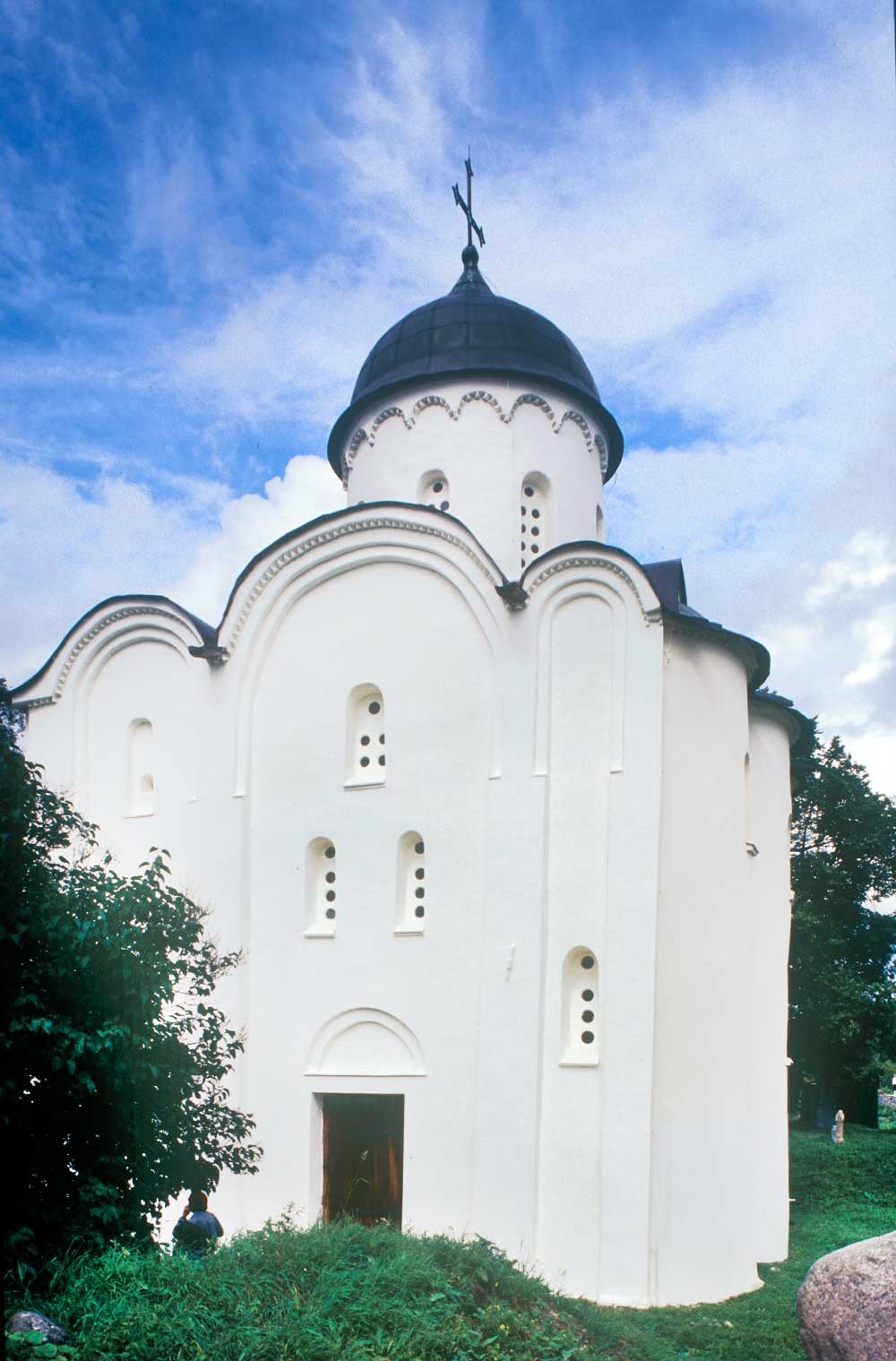
Church of St. George, south view with apse (right). August 16, 2003.
William Brumfield
The initiator of the Church of St. George is thought to be Bishop Nifont, a prelate of Greek origins who was responsible for the exquisite Cathedral of the Transfiguration of the Savior at the Transfiguration Monastery in Pskov, which was known as Novgorod’s “younger brother”.

Staraya Ladoga Fortress. Ruins of west wall and Vorotnaya Tower (left). Summer 1909.
Sergei Prokudin-Gorsky
The St. George Church conforms to a basic form common in pre-Mongol Novgorodian Rus: a simple whitewashed structure of thin brick, with each façade divided into three bays. An apse, containing the altar, extended from the east side, and the structure was crowned by a single dome elevated on a drum, or cylinder. The simple interior had four piers that supported the ceiling and dome.
The ancient church was restored in various phases during the 20th century, including the 1920s and 1950s. During that period the 19th-century bell tower visible in Prokudin-Gorsky’s photograph was demolished as anachronistic.
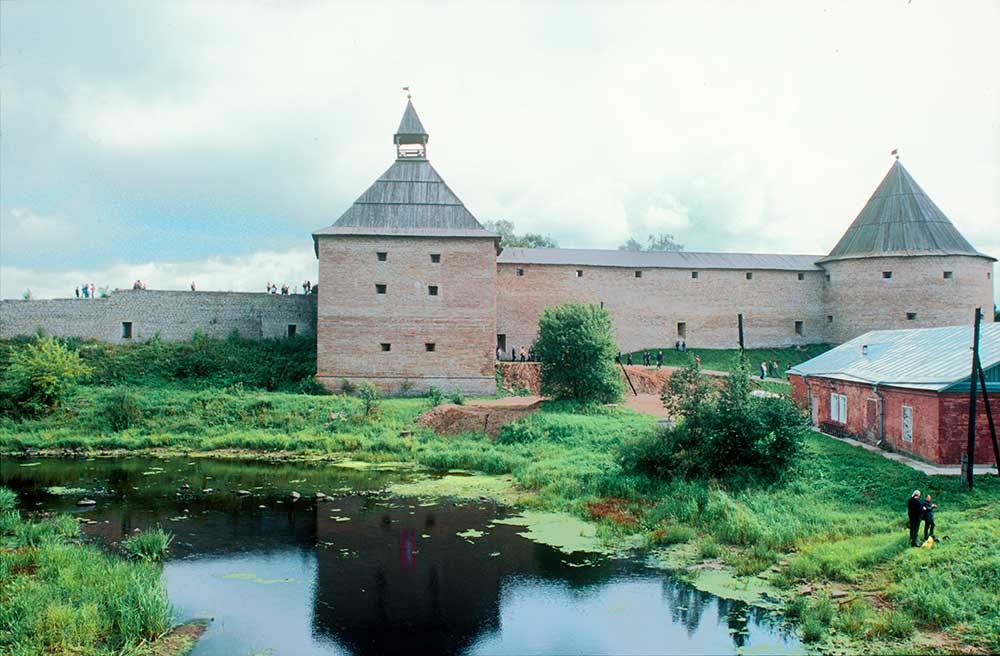
Staraya Ladoga Fortress. West wall with Vorotnaya Tower (left) & Clement Tower. Foreground: Ladozhka River. August 16, 2003.
William Brumfield
In subsequent centuries Ladoga remained a significant Russian outpost in the northwest. Its walls were expanded with massive towers by Grand Prince Ivan the Great of Moscow at the end of the 15th century. Captured by the Swedish commander Jacob De la Gardie in 1610 during the Time of Troubles, Ladoga was retaken by Ivan Saltykov the following year, but changed hands again. In a much-reduced state, it remained Russian territory with the signing in 1617 of the Stolobovo Treaty, which ended the Russ-Swedish War of 1610-1617.
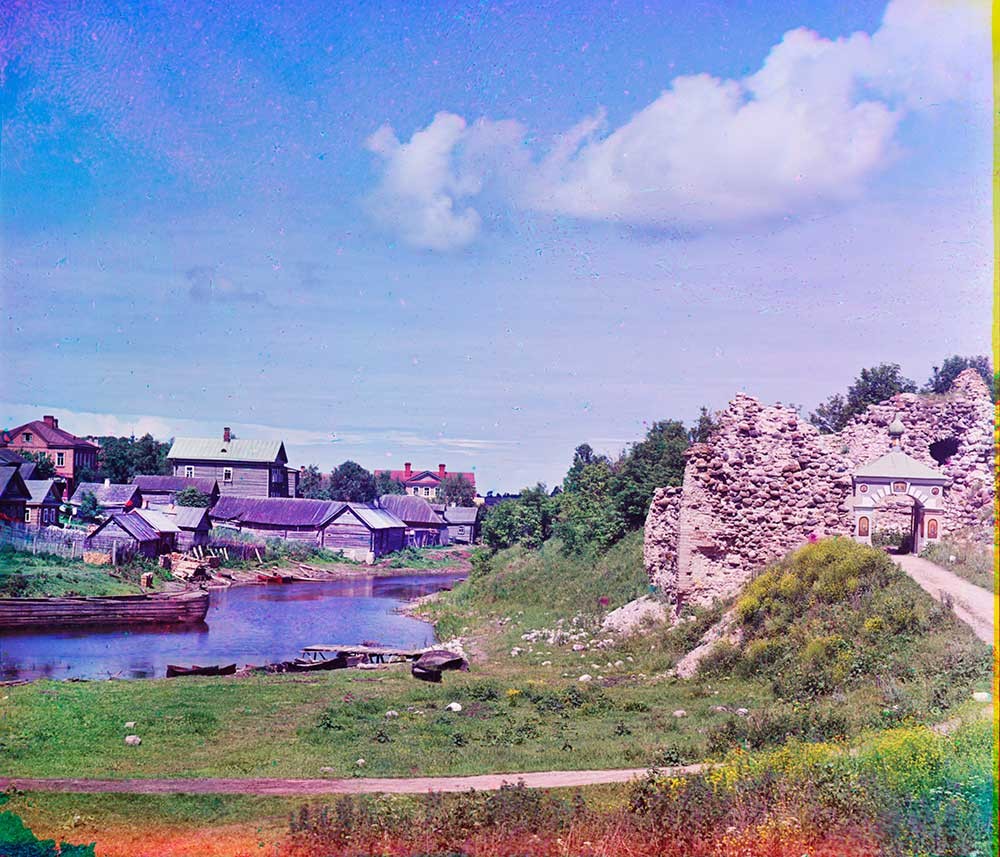
Staraya Ladoga village with Ladozhka River & ruins of Vorotnaya Tower. Summer 1909.
Sergei Prokudin-Gorsky
By the time of Prokudin-Gorsky’s visit, the massive stone walls had fallen into a state of picturesque disrepair. He took four photographs of the fortress remains, primarily from the Ladozhka River.
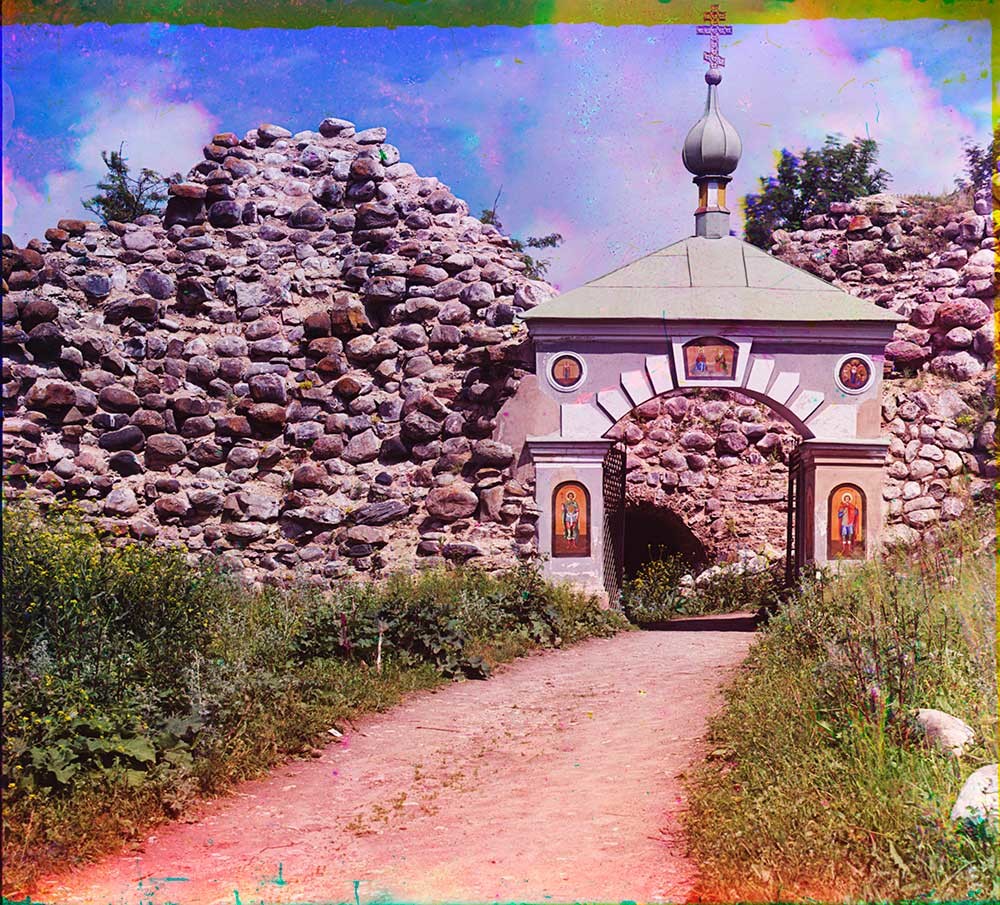
Staraya Ladoga Fortress. Gateway with ruins of Vorotnaya Tower. Summer 1909.
Sergei Prokudin-Gorsky
Prolonged restoration work on the fortress walls began in 1960, and by 1976 portions of the walls and two large towers—the Vorotnaya and the Clement - had been rebuilt. Significant impetus was provided by the founding of the Staraya Ladoga Museum in 1971. My photographs show the fortress wall and towers as they looked in 2003. The restoration process continues to the present.
Even in its abandoned state (or perhaps especially in that state), Staraya Ladoga has inspired generations of artists, including Valentin Serov, Boris Kustodiev and, above all, Nicholas Roerich, whose paintings colorfully recreated visions of Viking boats in the area. On a windswept summer day, the view from the Old Ladoga fortress down the Volkhov River continues to summon such reveries.

Wooden Church of St. Demetrius of Thessaloniki. Built as parish church in 1731. Restored in 1901 & at beginning of this century. August 16, 2003.
William Brumfield
If using any of Russia Beyond's content, partly or in full, always provide an active hyperlink to the original material.
No comments:
Post a Comment